Mise en scene provides the detail and atmosphere of a film or show. The set, lights, costume and composition contribute to the telling of the narrative. Providing emotion and depth to a production. Like shown within the 2009 movie “Coraline” Directed by Henry Selick.
[1]”Setting creates both a sense of place and a mood and it may also reflect a character’s emotional state of mind.” The actual setting of the movie is split into two worlds. The ‘Real World’ and the ‘Other World’. Each of them may be similar in layout are extremely different. this is shown within the color and tonal balance chosen for each set. Within the ‘Real World’, the setting is entirely made up of greys and washed out pastels, creating a dull and boring world for the main protagonist wander through. Though it also emphasis the ‘Other World’. Which mainly consists of bright saturated colors and deep rich tones. Mainly yellows and warm oranges and blues for the majority of the film. Which is used to lure the protagonist and the audience into a gentle and vulnerable lull of calm.
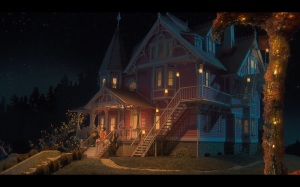
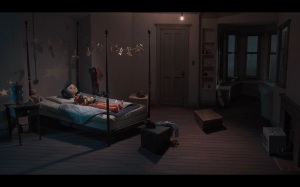

Costume as well as acting contribute to how a story is shown and told. The ‘Other’ mother is the best example for this. During the first two acts of the film the ‘Other’ mother is shown to be exactly the same as the original. Her movement and costuming is down to be soft and gentle and warm. Even her physical appearance is shown to be rounder and more approachable. During the second act she is then seen to be bettering into the idea of perfection. In the final act her true nature is revealed. She dresses sharply, her movement is dangerous. her features become more defined until the point of where it turns unnatural. The animators look for inspiration from the voice actors as well, adding that extra life to the puppet. One saying [2]”I just try to, get some of her body language or how she would deliver things….Echoing how she would handle things”
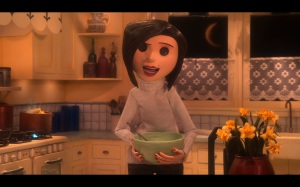
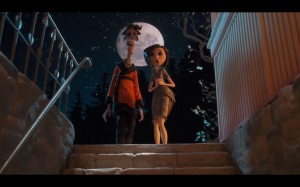
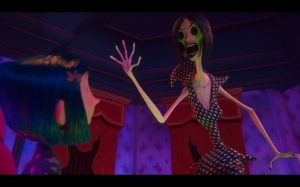
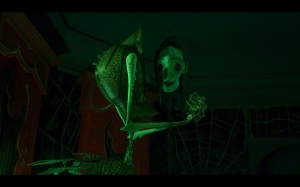
Lighting plays a large role within the film. though it uses three point lighting, its the highlight that the production team have used on characters that add to the story. Coraline has for the most part a soft warm yellow light on her. She is the protagonist, she is a representation of good, hope, etc for the audience to feed on. While the ‘Other’ mother’s highlights change (like her costume) over the course of the film. Staring with the warm yellows before switching to a bright green in the third act. Green being a general representation of evil and something scary within a children’s film. Because of these set ideas and tropes an audience has of the symbolic colors it helps add to the story.
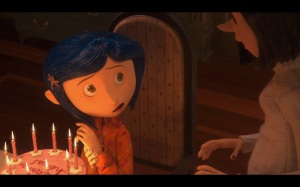
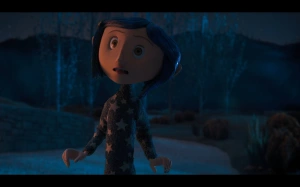 2009 Focus productions ‘Coraline’ Dirrected by Henry Selick
2009 Focus productions ‘Coraline’ Dirrected by Henry Selick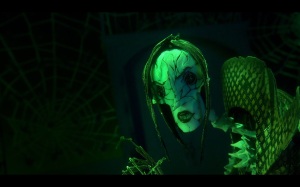
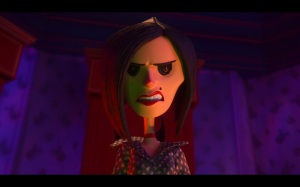
To sum up, Mise en scene helps add the depth and fullness to the world of a film that cannot be brought out with just words. It is there to add context and atmosphere to a film for an audience to full experience a story
Sources:
Focus Features. (2008). “Coraline” – Crafting the World of Coraline. [Online Video]. November 19 2008. Available from: https://www.youtube.com/watch?v=GYLajMqw8bI. [Accessed: 23 May 2015].
[2] kdlmd243. (2009). The Making of Coraline – It’s Alive. [Online Video]. July 8 2009. Available from: https://www.youtube.com/watch?v=XUqMfKbV4ho. [Accessed: 23 May 2015].
Mise en scène – Wikipedia, the free encyclopedia. 2015. Mise en scène – Wikipedia, the free encyclopedia. [ONLINE] Available at: http://en.wikipedia.org/wiki/Mise_en_sc%C3%A8ne. [Accessed 23 May 2015].
Mise en Scene. 2015. Mise en Scene. [ONLINE] Available at: http://www.cod.edu/people/faculty/pruter/film/15points.htm. [Accessed 23 May 2015].
[1] MISE-EN-SCENE | College Film & Media Studies. 2015. MISE-EN-SCENE | College Film & Media Studies. [ONLINE] Available at: http://collegefilmandmediastudies.com/mise-en-scene-2/. [Accessed 23 May 2015].
Maschelli, J.V, 1965. The Five C’s of Cinematography. 1st ed. Los Angeles: Silman-James Press.
Whitlock, C.W, 2010. Designs On Film A Century of Hollywood Film. 1st ed. Italy: HarperCollins.
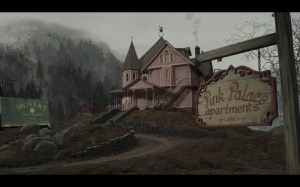
One thought on “How Mise en Scene Contributes To Films and Its Story; Coraline”